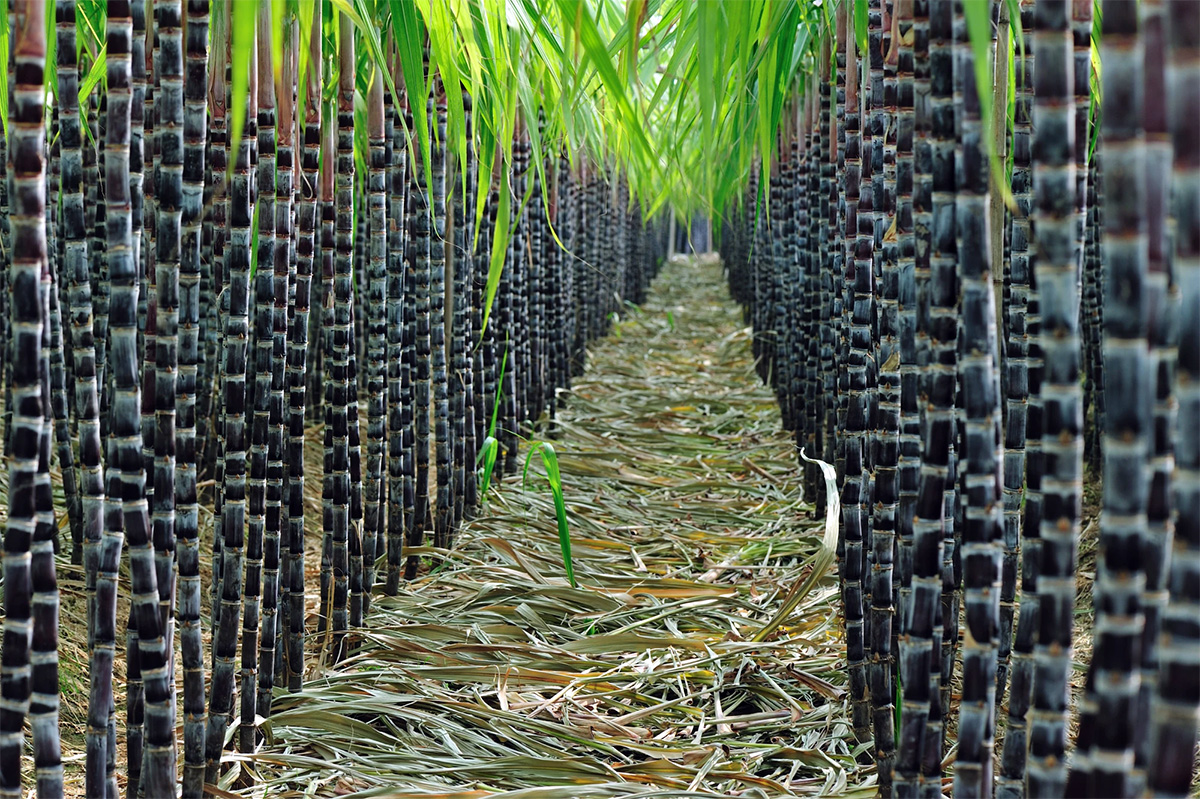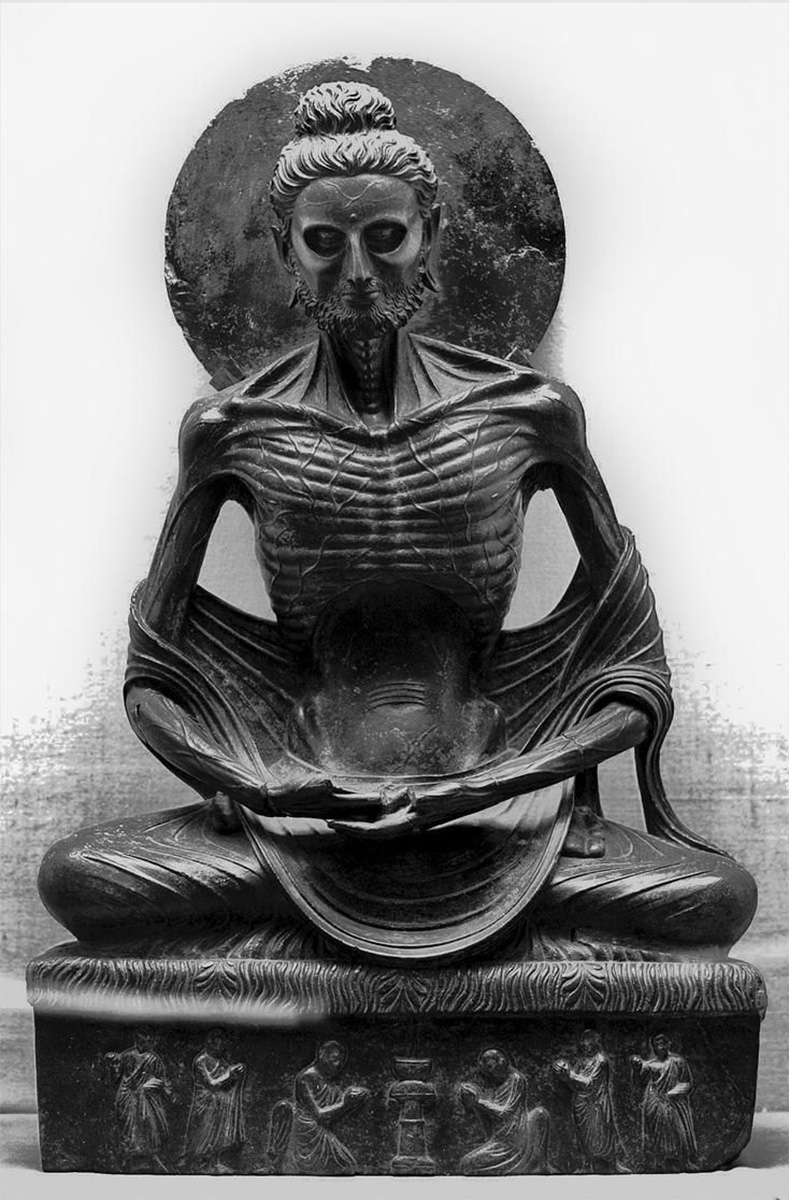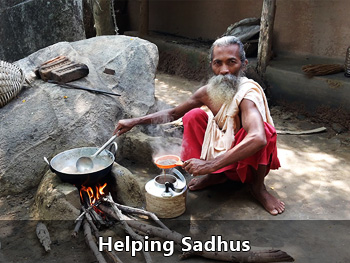Sugar – we all crave it, from children to adults. We indulge in it, from sodas, cakes, and assorted candies, during times of sadness and times of celebration. But crystallized sugar, first invented in India, has a dark history, involving conquest, secret societies, and exploitation.
It is believed the domestication of sugarcane was first carried out by the peoples of New Guinea over 10,000 years ago. Moving from island to island this sweet grass eventually made its way to India. It was in India that the science of creating sugar rock crystals was first developed. There it was known as ‘sharkara’ Sanskrit for gravel or grit.
The techniques involved heating and cooling, seeding, and agitation of the syrup to produce various qualities and refinement of the sugar. These techniques were passed down to a select few, from master to apprentice.
But sugarcane was not simply a sweet, it was also used in medicine. For those with jaundice, a disease producing yellowing of the eyes and skin, rock sugar was prescribed. The disease would cause it to taste very bitter but in time would become sweet as the patient was cured.
Sugarcane juice was also used by holy men to provide strength during their austerities.
One holy man, Siddhartha Gautama, was known as being ‘born of sugarcane’ since his ancestry was traced through the Solar dynasty of Maharaj Ikshvaku (Sanskrit Ikshu meaning ‘sugarcane‘) and back to the first King Manu. In one tradition, it is said that after attaining enlightenment, the first food the Buddha tasted was sugarcane provided by two brothers from Orissa named Tapassu and Bhallika. Seeing his emaciated body, and understanding him to be a holy man, the brothers felt compassion and gave him some sugarcane they were transporting to market. They would subsequently become his first followers.
The first written reference to sugar occurs in 325 B.C. after the conquest of Persia and attempted invasion of India by Alexander the Great. One of his admirals, Nearchus, while sailing down the Indus river wrote to his amazement of “a reed in India that brings forth honey without the help of bees.” Perhaps this reference to honey indicates not simply the sweetness of the new found sugar but also to its color – that the Indians had not yet developed the process of creating clear white crystals. He also noted the Indians consumed a pudding made of rice, milk, sugar, and cardamom, what today we might call a ‘sweet rice’.
It was in India that Alexander first encountered sugar, cardamom, and rice. The Greeks referred to rice as Oryza which linguists believe to be a loan word from Tamil ‘arici’ meaning rice. Alexander brought these items back and spread them throughout his empire.
However, while rice started to be grown in areas as far off as Egypt, sugarcane never really caught on. We know that sugar grows best in tropical environments with lots of rain. Most likely the European and North African environments were not conducive to its growth. With the collapse of Alexander’s empire shortly after his death the knowledge of sugar once again fell into obscurity.
In 647 AD the Chinese Emperor Taizong of the Tang dynasty sent a mission to the Kingdom of Magadha (modern Bihar, India) to learn the secrets of sugar making. We know by this time that India had developed the process to refine clear white crystals as the Chinese referred to it as Tang Shuang – ‘white frost’. Buddhist monks carried the tradition back to Asia where it is said they became expert in its creation.
India was in a unique geographic position, with Persia, Arabia, and Europe to its West, and Indonesia, China, and Japan to its East. Physically at the center of the ancient world it became a bridge that linked East and West, allowing for the transmission of new trade and ideas by land and sea.
Then in 653 A.D. the Persian empire, under Yazdgerd III, collapsed after years of war with the invading Arab armies. Prince Pirooz, the son of Yazdgerd III, would escape to China where one of his sisters was married to the Emperor.
It is during this period that we find the first Arabic reference to ‘shukkar’ derived from ‘sharkara’, ultimately becoming the English loan word sugar. In a similar manner, the Indian word for rock sugar, known as ‘khanda’ meaning ‘a broken piece’ in Sanskrit, became Arabic ’qandi’, and ultimately ended up in the English lexicon as candy.
By the 10th Century, the persecution of the Persians became so great that a contingent sailed to India in search of peace and freedom. The Persians had heard tales of a pious King named Jadi Rana and sailed to his Kingdom on the coast of Gujarat. It is said the King presented the leaders of the Persians a bowl of milk filled to the brim symbolizing that his Kingdom was full. At this presentation the leader of the Persians took some sugar from a pouch and sprinkled it in the milk – it did not overflow. Like sugar they would blend in and only sweeten the Kingdom. The King then granted them refuge. Their descendants are today known as the Parsis.
In 1099 A.D. European Christians conquered Jerusalem taking it back from the Arabs in the first of what would become nine Crusades. By 1119 A.D. a monastic military order, known as the Knight’s Templar, was formed to provide safe travel for pilgrims to the Holy Land. Many myths, legends, and conspiracies surround the Knight’s Templar. It was seen as a secret society with its own independent base of political and financial power. Its membership was drawn mostly from the nobility of France and Britain.
When the Knights Templar first entered the Holy Land they encountered caravans carrying ‘sweet salt’. This was brought back to Europe where it quickly became a treat for the nobility. Eventually they would establish their own sugar mill on the island of Cyprus to secure their own independent supply.
The last Crusade ended in 1291 A.D. when the Christians lost the Holy Land to the Arabs. With the defeat the political fortunes for the Templar Knights would change. On Friday, October 13, 1307, the King of France Philip IV ordered the destruction of all Templar Knights. Most were tortured to death and burned at the stake.
No further attempts were made to re-conquer the Middle East. The political reality was, having spent over two hundred years at war with the Arabs, the Europeans were now completely dependent on Arab merchants for access to the riches of the East. Eyeing this wealth they became yellow with envy.
In 1492 Columbus sailed for India as a means of circumventing the Arab and Persian access to the East. He headed West hoping to circumnavigate the earth and end up in India. Instead he landed in a “New World” later to be called the Americas.
Thinking that he had landed in India, Columbus named the natives as ‘Indians’. Here he planted the first sugarcane plantation on the island of Hispaniola. To his dying day he insisted he had landed in India regardless of what evidence was presented to him.
The race was now on to conquer this New World and exploit its resources. It is estimated that the native population of the Americas in 1492 was between 50-100 million which collapsed to just 8 million by 1650. This was due in large part to the, often intentional, introduction of new diseases such as smallpox, typhus, influenza, and measles.
The discovery of this new land acted as a European population pressure valve – allowing many of the poor to cross the ocean in search of new opportunities. This reduced population pressures in Europe, leading to less disease, pollution, and conflict over resources. It is estimated that around 350 million people in the Americas today (North, Central, South) are of direct European ancestry.
With the native population decimated the colonial powers turned to the African slave trade as an economic institution of exploitation. The Trans-Atlantic Slave Trade Database has the most comprehensive shipping records of the slave trade. While these are only estimates, the best figures we have suggest that between 1525 to 1866 approximately 12.5 million Africans were shipped to the New World as slaves, of which 10.7 million survived the trip. Of the 10.7 million approximately 388,000 ended up in North America. The rest went to Central and South America.
The main propagators of the slave trade were the Portuguese and Spanish, followed by the English. Of the 10.7 million slaves around half ended up working on sugar plantations. Brazil had the largest number with over 4.8 million slaves followed by the various sugar islands in the Caribbean, Trinidad, Barbados, Cuba, and Jamaica.
The life of a slave was one of constant brutality. In his satire ‘Candide’, the French philosopher Voltaire has one slave describe life in the sugar plantations of Surinam:
“Yes, sir,” said the negro, “it is the custom. They give us a pair of linen drawers for our whole garment twice a year. When we work at the sugar-canes, and the mill snatches hold of a finger, they cut off the hand; and when we attempt to run away, they cut off the leg; both cases have happened to me. This is the price at which you eat sugar in Europe.”
As sugar production increased the price fell. This expanded the market from the rich to the middle class and finally to the poor of Europe. All of this exploitation for some sweet crystal powder to satisfy the tongue.
Today Brazil is the worlds largest producer of sugar followed far behind by India. While slavery is long gone many still work in harsh conditions in sugarcane plantations around the world.
The Vedic Sages have described the exploitation in the world as a disease like jaundice. Born out of ignorance and false ego, we cause great suffering to others. The Sages prescribe the rock sugar of the Holy Names of the Lord to cure this disease. At first, spiritual life will appear bitter in our diseased condition. But as we become cured of this exploitative mentality we will taste the sweetness of the knowledge of our original spiritual position, as spiritual brothers and sisters to all.
Other Articles by Vaishnava Das:
The Samurai: Protectors of the Cow
Sweet Salt – The Story of How India Invented Sugar
India – The Land of Stolen Jewels
The Vedic People of Scandinavia
The Vedic People of Azerbaijan
The Vedic People of Lithuania
India – The Land of Stolen Jewels
The Vedic Origins of the Piggy Bank
Soma – Elixir of the Gods
Manu and the Great Deluge
The Legends of Tulasi In Christianity
The Mysterious Iron Deity made from a Meteor
Ancient Shiva Linga in Ireland




















Thank you very much for the article… it was very very informative… keep up the good work.
Well said sir “The Vedic Sages have described the exploitation in the world as a disease like jaundice. Born out of ignorance and false ego, we cause great suffering to others. The Sages prescribe the rock sugar of the Holy Names of the Lord to cure this disease. At first, spiritual life will appear bitter in our diseased condition. But as we become cured of this exploitative mentality we will taste the sweetness of the knowledge of our original spiritual position, as spiritual brothers and sisters to all.” I am one of the Parsis that you mention in your nice article.
I’m in Uk and stumbled on this website.i love the historical stories and insights and beauty. Than you.
“…it is said that after attaining enlightenment, the first food the Buddha tasted was sugarcane provided by two brothers from Orissa named Tapassu and Bhallika”…THIS IS OBVIOUSLY BEFORE THE KALINGA WAR WHEN ASHOK TURNED BUDDHIST AFTER INVADING WHAT IS TODAY MODERN ORISSA/ODISHA.WHAT IS THE HISTORY OF BUDDHISM IN ODISHA/KALINGA? ALSO, ORYZA SATIVA MAY BE A DERIVATIVE OF ORISSA/ODISHA OR VICE VERSA , INTERPOLATED WITH ARICI, COMBINING GREEK,LATIN,ODIYA,TAMIL,SANSKRIT IN INTERESTING PHONETIC DEVELOPMENTAL WAYS…
Excellent article. Informative. Thank you.
Thanks, fruitful teachings.
Sweet article which ended up bitter
Thank you for this well written and informative article.
Very enlightening and revealing article.
Learnt a lot about history.
Thanks fir the story of sugar.
I ma from the tiny twin islands state of Trinidad and Tobago. MY ancestors were shipped from BIHAR Up in India to Trinidad from 1845-1917 under a new system of slavery called Indentured Labour System.
Indians love sugar, but too much cause diabetes.
raviji
What a bitter life for the slaves that toiled for sweet sugar for others.
Thank you so much for publishing such informative article.
Thanks for the informative article. Though “sugar ” has its origin in “Sharkara”, it was news that the origin of sugar is believed to be New Guinea 10,000 years ago. Looking forward to more such articles.
Very well tracked the history of sugar and the sad state of affairs in the Americas. Appreciate the Vedic wisdom on the sugar.
The word ‘sharkara’ is used for jaggery in Malayalam language also.
This article is wonderful.
I am from a small island called Guyana. My ancestors were shipped from India Calcutta to Guyana from 1838 as Indentured Labor .
An excellent historical facts and findings which links American History too.
I am from Trinidad, West Indies, My relative came from Uttar Pradesh as slave by the Barbaric British. slave traders. We were able to trace the original ancestors in INDIA .We visited them in JANUARY 2019. The Meeting was both happines and sadness. We are still in contact. This discovery was done by my Nephew Aneil Garib who did the ground work without giving up when at times the leads were fruitless.
The two Odia brothers offered Arisa Pitha ( arisa is round shape like poori, made out of rice floor, molasses and fried in ghee, Pitha means cake) to Buddha Dev after he reached Nirvana. The two brothers became his first disciples.